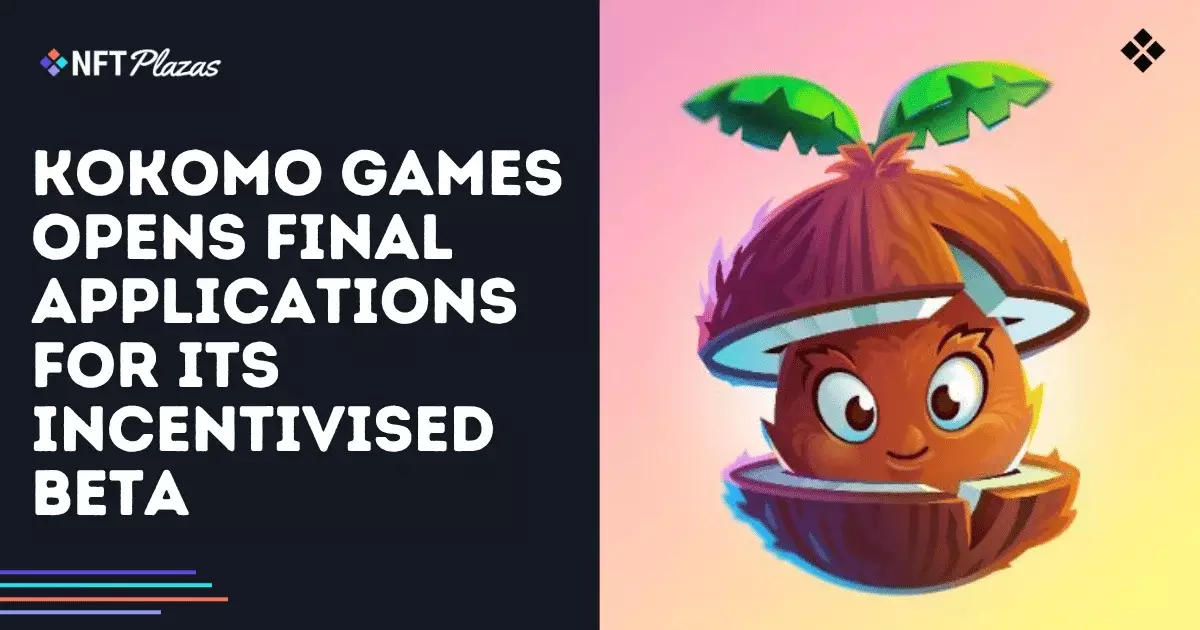Kokomo Games’ recent announcement about opening its incentivized beta test might seem like a promising leap forward in blockchain-based entertainment. The company promises early access to a browser-centric platform with mini-games, NFTs, and integrated rewards—all wrapped in the allure of decentralization. Yet, beneath the surface, this initiative exposes the paradoxes and vulnerabilities that continue to plague the NFT gaming sphere. Despite the hype surrounding Web3’s potential to revolutionize gaming, reality reveals a landscape riddled with inefficiency, false promises, and an overreliance on speculative assets.
The core question remains: is this truly a step towards more engaging, player-centric experiences, or a strategic maneuver to entice investors and early adopters into another digital collectathon? Kokomo’s model, which involves pre-funded accounts, NFT utility, and token rewards, appears innovative on paper. However, it’s crucial to scrutinize whether such features genuinely enhance gameplay or merely serve as hooks that sustain an overinflated market bubble. There’s a risk that these projects prioritize hype over sustainability, turning gaming into a fleeting spectacle driven by quick monetary gains, rather than genuine entertainment.
The Problematic Promise of Ownership and Rewards
NFT advocates often tout true digital ownership, tokenized assets, and earning opportunities as game-changers. Kokomo’s strategy of offering NFTs—like its Kokomons—that confer benefits such as reduced fees and exclusive features sounds appealing. Yet, in practice, these assets tend to be volatile, frequently relegated to speculative playthings rather than intrinsic parts of engaging game design. The very foundation of NFTs in gaming remains dubious: do players really need to own a digital cat or a leaderboard badge, or are these merely assets designed to be bought, sold, and inflated in value?
Furthermore, the promise of earning tokens ($KOKO) and staking usually flutters in the wind when the underlying economic system is unsound. The success of such initiatives depends largely on a robust, expanding user base and real use cases, which are often absent or superficial in blockchain gaming. Kokomo’s plan to synchronize its NFT ecosystem with a soon-to-be-launched native token seems more like an attempt to create a closed-loop economy, which may crumble once hype subsides or market sentiment shifts.
The fact remains that for most users, these digital assets hold little more than fleeting novelty, and their real-world utility is often limited. When combined with the current market environment—characterized by speculation, pump-and-dump schemes, and lack of regulation—NFT gaming risks becoming a playground for short-term gains rather than sustainable entertainment.
Fundamentally Flawed Business and Engagement Models
Kokomo’s beta platform, with its mini-games like Snake, Chess, Blackjack, and Arrow Racer, looks like a nostalgic throwback rather than a revolutionary experience. Yet, the bigger concern is how these simple games are embedded within a complex economic framework that may ultimately exploit players’ desire for ownership and success. The reliance on pre-funded accounts for testing suggests a heavily curated environment that’s more about collecting user data and building an ecosystem than fostering genuine passion for gaming.
The inclusion of tasks, leaderboards, and communication features borders on superficial engagement designed to keep players hooked. However, the absence of real earning features in the current beta raises questions about how these ecosystems will sustain interest once early enthusiasm wanes. Promises of future rewards and token airdrops often resemble classic bait-and-switch tactics used in the crypto world—where early participants are incentivized to join, only to find that the promised benefits are either delayed or diluted.
Moreover, the lengthy path to full launch—scheduled for Q3 2025—suggests that these projects are still in development, yet they already capitalize on market frenzy and FOMO (Fear of Missing Out). Such timelines often mask unstable foundations that can shake apart when the initial bubble bursts. The real challenge lies in creating a gaming environment that isn’t just a monetization scheme but offers meaningful, lasting entertainment.
Navigating the Illusion: The Future of Blockchain Gaming?
While Kokomo’s ambitions are commendable, the overall direction of NFT gaming remains questionable. These ventures are often built on the false premise that decentralization and digital ownership alone will transform gaming into a more equitable and player-driven space. The truth is, many of these ecosystems are still heavily centralized in terms of their control over assets, platforms, and economic flows.
The allure of leveraging celebrities and big investors such as Steve Aoki, Mike Shinoda, and names associated with Sandbox and SoftBank lends an air of legitimacy. However, prestige does not equal substance, especially when the core mechanics rely on speculative digital assets rather than engaging gameplay or sustainable business models. The blockchain’s potential to democratize ownership is largely undermined by the reality that most players are simply speculators within a closed ecosystem, not true stakeholders.
The long-term viability of blockchain-based games depends on whether they can evolve past the hype into genuinely immersive experiences that reward skill and creativity—not just financial speculation. Until then, many NFT gaming projects, including Kokomo’s, risk remaining elaborate illusions built to mask the weaknesses inherent in their economic and developmental models. These projects are more likely to fade into obscurity or burst along with the broader crypto market than realize their lofty promises of innovation.

